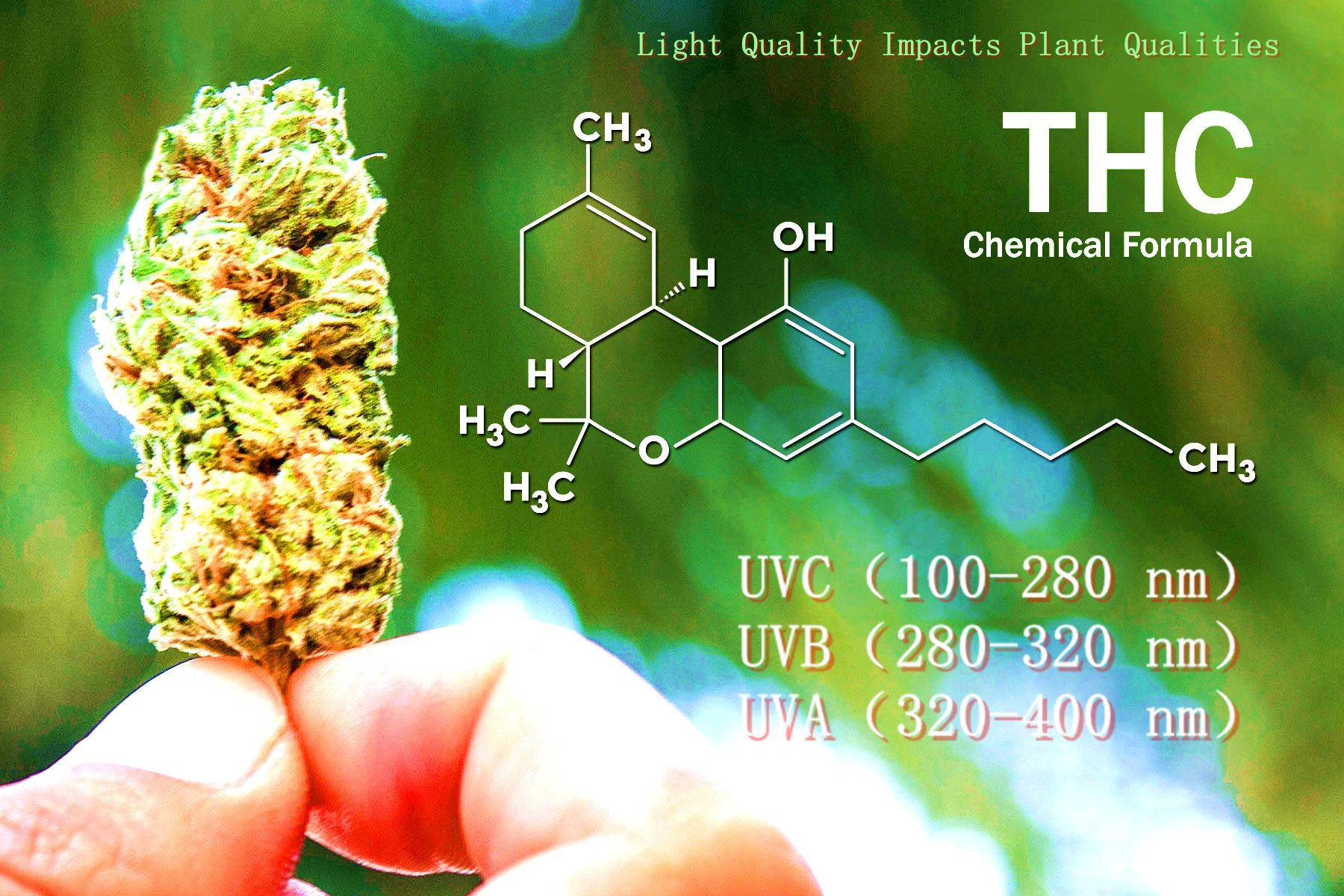The Original Manufacturer Of LED lighting
 RioTinto
RioTinto  2024-12-20
2024-12-20
The latest research shows the relationship between cannabis growth and light.
Although the secondary metabolites of cannabis are complex, they can be broken down into two basic family of compounds: 1) Cannabinoids, of which THC and the CBD are only two of more than one hundred species; 2) Terpenes ,a large number of compounds related to aroma and taste. GPP (Allyl Pyrophosphate) is the basis for the biosynthesis of cannabinoids and monoterpenes. Research by lighting manufacturers has shown that GPP can be manipulated by light processing, and these companies are very interested in studying the relationship between the expression of secondary metabolites and spectra. Some growers who collaborated with them on confidential field studies have found that the quality of light affects these branching elements that affect the content of THC and CBD and the expression of terpenes.
Ranging from low to high wavelengths, , different numbers of photons in different parts of the spectrum affect other aspects of plant expression in both positive and negative ways. Over the years, research conducted by researchers in cultivation facilities around the world has identified some key findings that cannabis growers can use to create the best phototherapy methods for plants.

The effect of UV on cannabis
Light from the UV spectrum can suppress or inoculate plants against pathogens, according to multiple studies. The Lighting Research Center at Rensselaer Polytechnic Institute has performed experiments with UV lighting on cucumbers, squash, strawberries, and grape cultivars to investigate downy mildew, and UVC was noted to suppress powdery mildew.
Pigments are both aesthetic and chemical. Some cannabis growers treating flowering canopy with UV light have observed increased purpling, induced by greater presence of anthocyanin pigment. While genetics and plant temperature are contributors to pigmentation, purpling can also be influenced by light treatments, with UV and low-wavelength blue light treatments producing darker leaves and flowers. Studies conducted by Michigan State University have found increased UV exposure produced redder varieties of red-leafed lettuce, as anthocyanin is used by plants to alleviate the stress induced by wavelengths, like UV, damaging their DNA.
According to some manufacturer researchers, there is a popular perception that UV can increase cannabinoid content like THC, but researchers working with Texas Original Compassionate Cultivation showed UV both reduced yield and “did not affect cannabinoid or terpene concentration.”Therefore, controlling UV rays can also have a positive effect on our cannabis cultivation.